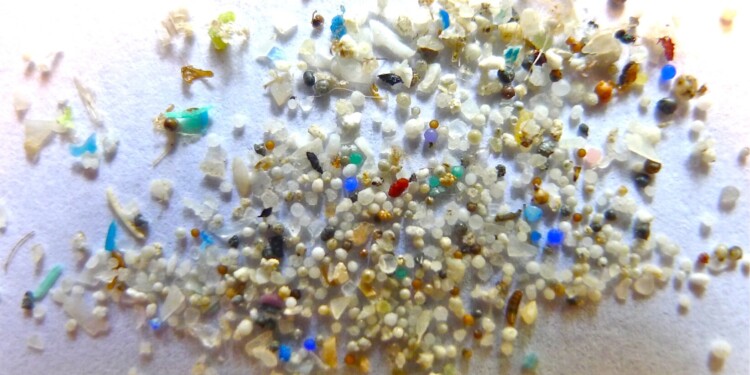Previously known to reside in our air, water and food, now for the first time scientists have discovered microplastics in human blood. This new research — published in the journal Environmental International by the Department of Environment and Health, Faculty of Science at Vrije Universiteit Amsterdam, The Hague, The Netherlands — found tiny particles of microplastic in 80% of people tested.
This recent discovery shows an alarming capability of microplastic particles to travel through the body and into organs. The health impacts of these particles are still yet unknown, but researchers believe they could be extensive as microplastics have been known to damage human cells before.
What are microplastics and how did they end up in human blood?
Microplastics are relatively tiny particles of plastic debris that have been compressed over time from the disposal and breakdown of consumer products. They contain a range of contaminants including trace metals and potentially hazardous chemicals.
Microplastics have been known to leak into water streams and most notably consumed by marine animals. They can be ingested by all different shapes and sizes of animals, from tiny fish to giant whales.
Generally, large marine animals have no problem passing microplastics through their bodies, but relatively smaller marine animals often find these tiny plastic particles stuck in their gut for extended periods of time — leading to abrasion and damage to internal tissues. Smaller marine life can also suffer reduced reproduction and growth from ingesting microplastics.
Yet, one of the most concerning aspects of microplastics in marine animals is how they could potentially transfer up the food chain.
According to Science Learning Hub, “Laboratory studies indicate that microplastics can potentially transfer through the food web marine, terrestrial and freshwater species that have previously ingested microplastics are preyed on by other animals.”
Since humans are part of this food web and sit at the top of the food chain, the possibility that microplastics could invade human bodies is likely — especially as scientists find more and more evidence of microplastics in blood and other parts of the body. Just like marine animals, humans could also suffer massive health impacts.
Finding microplastic in blood
Researchers analyzed 22 anonymous donors’ blood and found plastic particles in 17 out of the 22 participants.
In order to verify the hypothesis, scientists examined participants’ blood samples for various traces of polymers, the foundational substance of plastic. The most common type of polymer found in the bloodstream was polyethylene terephthalate (PET) — a common type of plastic used to make drink bottles, food packaging items and even makeup products like lipstick. Scientists reported that half of the samples had traces of PET in their bloodstream.
The second most prominent polymer found was polystyrene which is used to make disposable bowls, plates and food containers. Essentially, polystyrene is styrofoam — styrofoam being the branded name — and just like styrofoam, it is plastic that can not be broken down over time and is toxic to humans.
In June 2011, the U.S. Department of Health and Human Services added styrene, the chemical found and released by polystyrene, to its list of substances suspected of being a carcinogen — which causes cancer. The majority of polystyrene products are used for eating, therefore there is a big concern these toxic chemicals — and even microplastics — can leak from the cup one is sipping on into their body.
In fact, this may be true as a third of donors’ blood samples contained polystyrene.
The third most common plastic in human blood was polyethylene, a material used in making paints, shopping bags, plastic wrap, toothpaste tubes, etc. From the study, a quarter of blood samples contained polyethylene.
To be able to detect polymers in blood samples, researchers adapted existing techniques to be able to detect and analyze these small particles which can be as small as 0.0007mm.
The overall concentration of these small particles in donors’ blood averaged 1.6 micrograms — the equivalent to one teaspoon of plastic per the amount of water in ten large bathtubs researchers say.
Although this may appear as a small amount, even just the tiniest amount of microplastics in the bloodstream is a significant find that many scientists predict could have disastrous effects in the future — especially as they already have detrimental effects on marine life.
Research has found microplastics can damage cells, what will be next?
Research from the Universitat Rovira i Virgili in Tarragona, Spain in August of 2021, found that microplastics can latch on to the outer membranes of red blood cells — limiting their ability to transport oxygen.
As of now, this is the only known health hazard of microplastics, but scientists wonder whether tiny plastic particles like microplastics — and even nano plastics — could affect how the brain, digestive system and other parts of the body function.
Further research is expected to come and proves essential to understanding the effect widespread microplastics can have on human health. Already, fish and other marine animals have fallen victim to these seemingly tiny and “harmless” plastic particles, humans may be next.
With plastic production still on the rise, pressuring delegates and government officials to pass laws such as the UN plastic treaty to reduce plastic production and waste is the best thing to do to protect our environment, animals and ourselves.
Editor’s Note: The opinions expressed here by Impakter.com columnists are their own, not those of Impakter.com. — In the Featured Photo: Microplastics at Oregon State University on September 6, 2012. Source: Oregon State University, Flickr.










